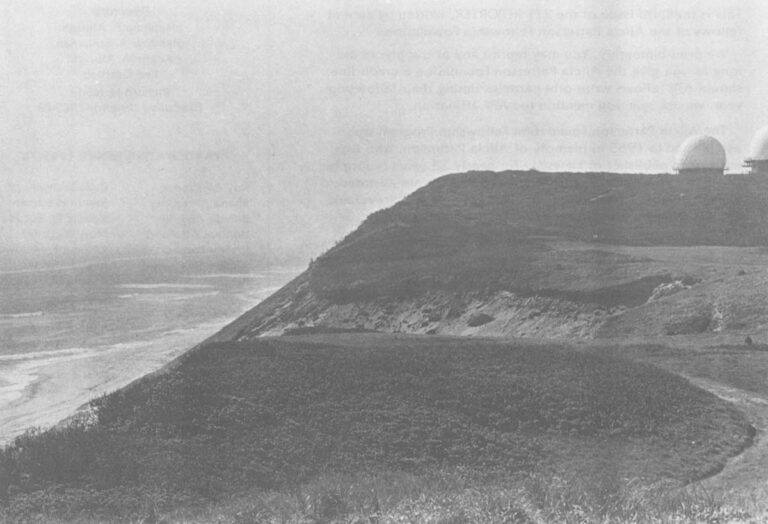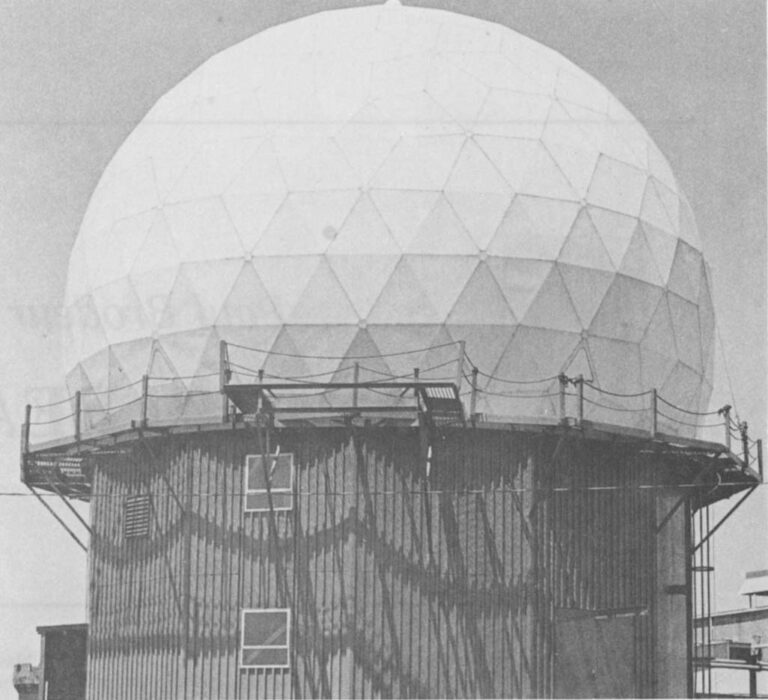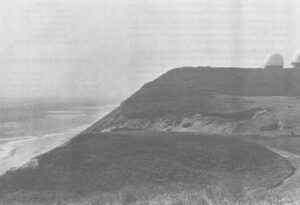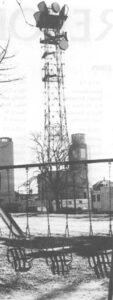Early last winter, two well-attended and widely reported meetings took place in North Truro and in Sandwich, Massachusetts-towns located at either end of Cape Cod-between citizens concerned about the health hazards of microwave radiation and representatives of the United States Air Force. At both meetings, the Air Force representatives were asked to state what data they possessed to support their contention that radiation emanating from the gigantic new PAVE PAWS radar at Otis A.F.B., in Sandwich, and from the three conventional radars at the North Truro Air Force Station, would not harm the health of people, particularly children and pregnant women, who might be exposed to it over a period of time. The Air Force representatives could not answer this question because they had little or no data to support their contention. Indeed, they spent a good deal of time at both, meetings trying to explain why they had ignored a significant amount of data indicating that there may be extremely serious long-term health problems associated with chronic exposure to radar.

As a result of these meetings, Representative Gerry E. Studds, a Democrat from the 12th District of Massachusetts, wrote to Secretary of the Air Force John C. Stetson, and requested that a survey be conducted of microwave radiation levels in the vicinity of the North Truro Air Force Station. During the last week in April, an Air Force team headed by Mr. John C. Mitchell, chief of radiation physics at the Radiation Sciences Division of the School of Aerospace Medicine, at Brooks A.F.B., in Texas, measured ground level radiation intensities at 44 different locations in the towns of Truro, Wellfleet, and Provincetown. On May 13th, Mr. Mitchell announced that the results of the survey showed that microwave levels were 1000 to one million times lower than the Soviet occupational microwave radiation safety level of 10 microwatts per square centimeter, which is 1000 times lower than the United States standard for exposure. According to a New York Times account, Mitchell said that the test results “should allay all fears of people in the area.”
At the beginning of June, the Air Force released its official report of the field survey, along with a news release stating that all 44-measurement sites had readings of less than 10 microwatts per square centimeter. This information was dutifully reported by The New York Times and a number of other newspapers. If the Times and the other newspapers had taken the trouble to check the Air Force’s news release against the Air Force’s field survey report, they would have discovered that 13 of the 44 sites had power densities greater than one microwave per square centimeter, which is the recommended level of exposure for the civilian population in the Soviet Union. They would also have discovered that four of the 44 locations were well above the Soviet occupational standard of 10 microwatts per square centimeter.
The trouble with the Air Force field survey, however, went far beyond the inaccuracy with which it was reported in The New York Times and other newspapers around the nation. To begin with, the Air Force used the wrong equipment to make its measurements. It measured microwave radiation emanating from the radars at North Truro with polarized directional antennas. According to a recent National Bureau of Standards report, polarized directional antennas are highly unreliable. They can only measure the electrical field from one angle. The Air Force should have used devices that can measure radiation coming from all angles and directions. Such devices are called isotropic probes. According to the National Bureau of Standards report, these probes “permit practical measurement of complex fields…” i.e., the kind of complex electrical fields emanating from the radars at North Truro. Why did the Air Force not use isotropic probes at North Truro, especially when it had used such probes before in conducting radiation surveys at similar installations in Michigan and in California? That is anyone’s guess. Suffice it to say that by not using isotropic probes the Air Force may have underestimated the radiation levels in Truro, Wellfleet, and Provincetown by tenfold.
Secondly, the Air Force further diluted the level of microwave radiation coming from its North Truro installation by using a common engineering practice of measuring peak pulse radiation at only two thirds of its actual value. In other words, the peak pulse power of 197 milliwatts per square centimeter, which the Air Force says it measured at the North Truro Golf Course, a half a mile from the radars, is probably closer to 300 milliwatts per square centimeter. Some scientists consider this to be an unacceptable level of exposure.
In the third place, the Air Force additionally diluted the results of its so-called field survey by time-averaging the power density levels. This means that the Air Force chose not to count the intervals between pulses of radiation, or the rotation on and nodding of the radars, in its calculations. This very conveniently allowed the Air Force to adhere to the obsolete 20-year-old standard for microwave exposure which is in effect in the United States, and to the orthodox notion that the only harmful effect of microwaves is the average heat they deposit in the human body. It allowed them, in short, to ignore steadily mounting scientific evidence, both here in the United States and abroad, that the instantaneous, non-thermal effects of being bombarded several hundred times a second by powerful peak pulses of radiation, which penetrate deeply into tissue, may prove to have serious biological consequences in the long run. The following are some of the effects of low-level peak pulse radiation, which have been found in animal experiments conducted in the United States in recent years:
changes of the bioelectric function of the brain at levels as low as 30 microwatts per square centimeter.
changes in brain chemistry at 100 microwatts.
changes in the permeability of the blood-brain-barrier, which is the membrane that prevents harmful proteins from reaching the brain, at levels between 10 and 200 microwatts.
changes in the immune system, which protects against infectious disease, at 300 microwatts.
Considering the fact that these effects have been produced at levels 1000 times lower than the peak pulse power that can be found at the North Truro Golf course, the statement issued by the Air Force Surgeon General that “the time-averaged power density levels [at North Truro] do not present an acute or chronic health hazard” is medically indefensible. (indeed, it would appear to be an indication of just how desperately the Air Force is trying to cover up the serious potential health hazards posed by microwave radiation.) Equally indefensible is the recent statement made to Newsweek Magazine by Janet Healer, of the National Telecommunications and Information Administration, who was quoted in a story dealing with the microwave hazard as saying that effects are not always hazards. A sensible society should, of course, assume that effects upon the bioelectric and chemical function of the brain are hazardous until it can be proven otherwise.

No such proof exists today. Indeed, evidence is pouring in to indicate that the microwave hazard has been seriously underestimated. Take, for example, two scientific papers that were presented at the Symposium on the Biological Effects of Electromagnetic Waves, which was sponsored by the International Union of Radio Science, in Helsinki, during the first week of August. One of these papers was delivered by Dr. B. Servantie, an internationally known microwave researcher at the French Naval Hospital, in Toulon, who described dizziness, involuntary trembling, brain malfunction, cardiovascular problems, weight loss, and blood disorders in French workers exposed to the emanations of radar. Another paper described an experiment conducted by scientists at the Stanford Research Institute, in Menlo Park, California, to determine the biological effects of pre and postnatal exposure to microwave radiation in squirrel monkeys. The results of this study were alarming to say the least. Four out of five infant monkeys that had been exposed to a level of radiation equivalent to the present supposedly safe U.S. standard died without apparent reason before reaching six months of age. None of the non-irradiated infant monkeys in a control group suffered any ill effects.
In light of such evidence, it is not surprising that some segments of the American public are beginning to show concern about the microwave hazard. An environmental group on Cape Cod is suing the Air Force to stop further work on the PAVE PAWS radar until an Environmental Impact Statement required by the National Environmental Policy Act is conducted. The issue will be decided in federal district court this autumn. Meanwhile, the Bureau for Radiation Control of the New York City Department of Health has announced its intention to establish a standard for environmental exposure to microwave and radio frequency radiation of 50 microwatts “in unregulated or uncontrolled areas available to men, women and children by virtue of residence, recreation or general public access.” This is a power level 200 times less than the level now considered safe for workers and people in the general population by the federal government. It is 100 times less than the level of radiation, which is allowed to leak from microwave ovens under federal regulations.
What does New York City know about microwaves that the rest of the nation doesn’t? The answer to that question will be given at a public hearing to be held on October 5th at the New York City Department of Health. This meeting promises to provide the first major confrontation between supporters of the reactionary view that if you’re not actually being cooked by microwaves you’re okay, and those who, mindful of the disturbing new data on the non-thermal effects of low-level microwave exposure, believe that a prudent society should take preventive measures now. In addition to the crucial necessity of protecting the public health, another matter important to the well-being of our constitutional democracy will be at stake-civilian control of the military-industrial complex, whose largely unchecked and growing power President Eisenhower warned the nation about nearly twenty years ago.
In short, the battle lines of the microwave controversy are now being drawn.
©1978 Paul Brodeur
PAUL BRODEUR’s Fellowship study is on Microwave Radiation.




